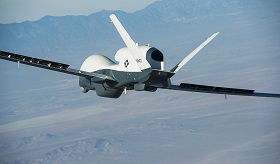During a military-related event on 4 August, 2018 Venezuelan President Nicolás Maduro came close to being assassinated by a pair of drones. While Maduro escaped unscathed, the attack did injure seven soldiers. Various media outlets noted that this was the first known drone assassination attempt on a president.
This ominous form of remote terrorism is compounded by the relative anonymity the perpetrators enjoy. While the study of remote killings has, up till now, focused on cyberattacks on hospitals or nuclear power plants, the use of drones for assassinations has finally crossed the boundaries of fictional bestsellers and movies and transformed into an emerging global threat.
Net-centric devices, including drones, will emerge as a major social disruptor in the coming years unless new regulations are drawn up to add extra layers of security to the information grid. From now on, we may see increasing calls for restricting the sale of drones that can operate beyond a maximum 200 to 500 metre radius.
The drone security solutions market is projected to be worth up to USD 2 billion by 2024. Several companies are already developing technologies that can detect and commandeer unauthorized drones in private or restricted airspace through radio frequency jamming and denial-of-service attacks.
Security gurus need to undertake regular risk foresight to think ahead and outthink the perpetrators of future forms of net-centric subversion.
During a military-related event on 4 August, 2018 Venezuelan President Nicolás Maduro came close to being assassinated by a pair of drones. While Maduro escaped unscathed, the attack did injure seven soldiers. Various media outlets noted that this was the first known drone assassination attempt on a president. This development was, however, long in the offing.
The type of drone used in the Venezuelan attack was reportedly a DJI M600 model that can be ordered online for USD 5,000. Each drone allegedly carried 1 kg of C-4 plastic explosives, which can be confected from online DIY (do it yourself) tutorials — if one knew where and how to look for them. Imagine what would happen if a few C-4 laden drones crashed into an oil tanker truck at a congested traffic stop or an oil refinery itself? Or a crowded children’s playground? A month since the assassination attempt on Maduro, terrorists in Syria’s Idlib province have begun using drones against Russian military bases in the region.
These incidents were preceded by an alleged drone attack on Abu Dhabi's international airport in late July executed by Yemen's Houthi rebels. According to rebel sources, the domestically-built Sammad-3 drones were launched and guided through 1,500 km of mostly Saudi and UAE airspace before reaching the airport. This incredulous feat continues to raise many questions. Do Houthi rebels really possess such technology and navigation support systems to execute this feat? Or were they aided by a state actor? It is possible that a few rebels have slipped quietly across the porous Saudi-Yemeni border and assembled weaponized drones from smuggled kits nearer to the airport.
This ominous form of remote terrorism is compounded by the relative anonymity the perpetrators enjoy. While the study of remote killings has, up till now, focused on cyberattacks on hospitals or nuclear power plants, the use of drones for assassinations has finally crossed the boundaries of fictional bestsellers and movies and transformed into an emerging global threat.
Drones can be used for a variety of nefarious activities. Some drones can see through walls and generate high-resolution 3D images of targeted structures or record passwords clacked on a keyboard in a secure high-rise office. They can be used to transport contraband, particularly narcotics, munitions and small arms across the US–Mexico border or be adjusted to make a special delivery all the way to Trump Tower. The US President Donald Trump should perhaps scale up the projected height of his fabled wall.
Net-centric devices, including drones, will emerge as a major social disruptor in the coming years unless new regulations are drawn up to add extra layers of security to the information grid. Otherwise, hackers may find a way to crash planes into skyscrapers and perform other frightening activities. The possibilities are endless. Here is where the Internet of Things (IoT), Industry 4.0, cryptology and psychopathology meet at the confluence of a terrifyingly complex reality.
From now on, we may see increasing calls for restricting the sale of drones that can operate beyond a maximum 200 to 500 metre radius. However, there are many ways to circumvent these restrictions. The advent of 3D-printed drones, just like 3D-printed guns, will pose new challenges to law enforcement agencies worldwide.
Eventually, the ongoing drone revolution may lead to renewed calls for greater Internet surveillance as well as a raft of drone-specific laws that will include mandatory licensing regimes. Drone enthusiasts may be required to attend drone piloting schools as a prelude to obtaining a license. Similar to driving licence, drone permits can be revoked if users indulge in risky or anti-social activities.
But how does one prevent the transmission of a 3D-printable drone designs through cryptographic channels? If secure blockchain transmissions are good enough for Bitcoin, they will do equally well in an underground, cyber-facilitated illegal weapons industry.
The drone security solutions market is projected to be worth up to USD 2 billion by 2024. Several companies are already developing technologies that can detect and commandeer unauthorized drones in private or restricted airspace through radio frequency jamming and denial-of-service attacks.
However, a combination of swarm intelligence and drone-mounted electromagnetic pulse devices would be able to “jam the jammers” and neutralize anti-drone solutions. Technologically-savvy subversives will be a step ahead in the future net-centric battle space. The developed countermeasures will be protracted, expensive, and based on hindsight. In the meantime, techno-subversives will work on new ways to breach defences that are still in the theoretical stages.
Security gurus therefore need to undertake regular risk foresight to think ahead and outthink the perpetrators of future forms of net-centric subversion. This is the real tricky part. The prevalent global talent identification regime is incapable of spotting those endowed with anticipatory or “metic intelligence” in this area. The open source domain — the fertile data mining ground for OSINT analysts — is equally disappointing with its mounting e-waste of suspect or toxic information.
Google search, for instance, is no longer as effective and accurate as its previous iterations. It is increasingly pandering to psychologically fragile snowflakes and ideological pansies whose flaccid viewpoints are prioritized in search results. Information integrity is being continuously sacrificed at the altar of fake news and political correctness — all for the sake of short-term political capital.
Ironically, the very “data smog” that facilitates political chicanery may turn out to be the ideal smokescreen for hi-tech subversive activities. This will have future implications for democracy — nominal or otherwise — as fake news societies would be at the forefront of technology-mediated discontent.






